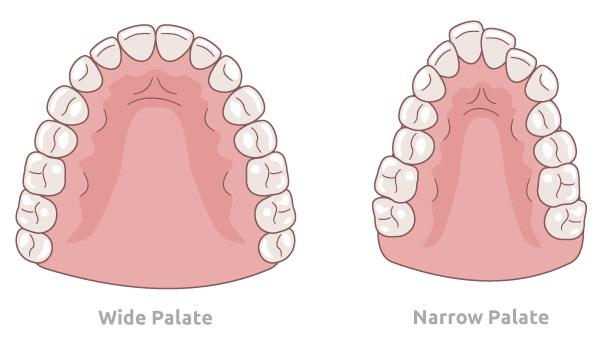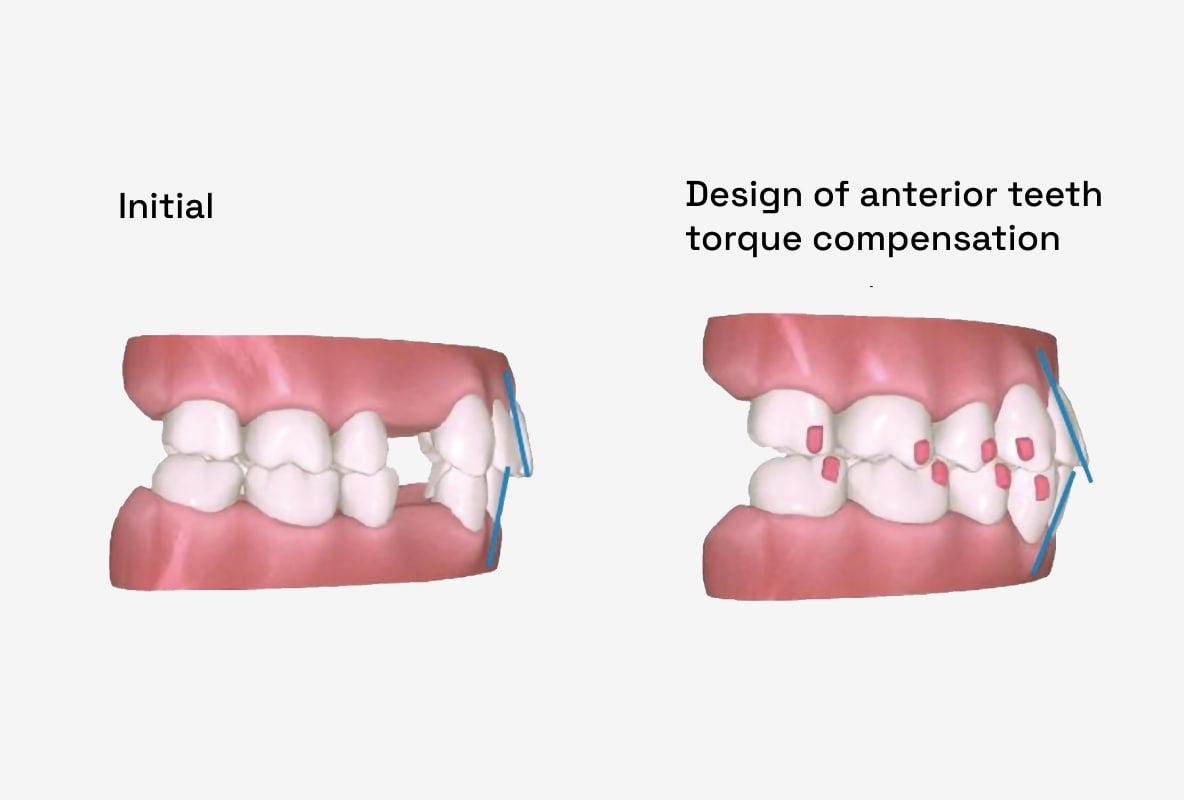Beyond Straight Teeth: The Surprising Link Between Airway Health and Your Child's Future
Discover why focusing on more than just straight teeth in orthodontics could be the key to lifelong health.
Imagine if orthodontics could do more than just straighten teeth and perfect smiles—what if it could transform your child’s health for a lifetime…? New research is uncovering an often-overlooked factor in orthodontics: airway health. It turns out that when orthodontists focus solely on aligning teeth, they might miss one of the most powerful benefits of early treatment: creating an airway that supports deep, healthy breaths. Prioritizing the airway during childhood growth stages can unlock benefits far beyond aesthetics. We're talking about better sleep, improved focus, and even stronger cognitive function—fundamental elements that build the foundation for lifelong wellness. Keep reading to learn more….!
Why Airway-Focused Orthodontics Matters
Studies have shown that by the age of 12, nearly 90% of a child’s facial growth is complete (Foley & Mamandras, 1992). With this rapid development, early orthodontic intervention—especially with techniques like palatal expansion—can make a profound difference in a child’s breathing and health. Traditional orthodontics has mainly centered on creating a beautifully aligned smile, but often without addressing nasal breathing or the development of the airway. Emerging insights from airway-focused practitioners reveal that adding airway health to orthodontic planning can help prevent issues like obstructive sleep apnea, chronic mouth breathing, and even cognitive struggles related to poor sleep (Leland, 2023).
Take palatal expansion, for example. It’s not just about making room for teeth; it’s also about broadening the nasal airway by widening the maxilla (upper jaw). This subtle adjustment makes it easier for kids to breathe deeply and naturally through their noses, supporting better respiratory health over a lifetime. And here’s a compelling benefit: studies suggest that kids who undergo early palatal expansion have a significantly lower chance of needing surgeries for sleep apnea and other airway problems later on (Rangel et al., 1985). By focusing on the airway, orthodontics can truly help kids develop healthier breathing and a stronger foundation for lifelong health.
One of the reasons early palatal expansion is so effective is due to the natural flexibility of a child’s bones. The mid-palatal suture—a key growth center in the upper jaw—remains adaptable until around age 12. After this point, the suture begins to harden and fuse, making non-surgical expansion more challenging (Heisey & Adams, 1993). So, acting during this developmental window allows orthodontists to shape the maxilla in ways that enhance nasal breathing and support healthy tongue posture.
By guiding these changes at the right time, orthodontic treatments go beyond tooth alignment. They help create a foundation for better breathing habits and overall health. This proactive approach doesn’t just make space for adult teeth; it sets children up for long-term wellness by supporting proper airflow and function.
The Cost of Overlooking Airway Health
When orthodontics focuses solely on aesthetics, the role of airway health can be overlooked, leading to significant health consequences. For example, children with narrow palates often experience a range of complications that affect their overall development. A narrow palate restricts space in the mouth and nasal passages, potentially resulting in compromised breathing patterns and contributing to long-term issues like poor sleep quality, cognitive challenges, and daytime fatigue. Thumb-sucking or other oral habits during early childhood can also contribute to narrowing of the palate, setting the stage for airway restrictions and related health issues as they grow.
Airway-focused orthodontics addresses these concerns by actively encouraging natural nasal breathing through techniques like palatal expansion, which widens the upper jaw to open up the nasal passages. This approach not only promotes better sleep but also supports improved focus and behavior during the day. By prioritizing airway health, orthodontists embrace a more holistic approach, aiming not just for a beautiful smile but also a more resilient, healthier child.
This shift toward airway-centered orthodontics represents an essential advance in treatment philosophy, aligning care with both immediate and long-term health benefits. It’s not about sacrificing aesthetics; it’s about recognizing that true health begins with function. By helping children develop healthier breathing patterns, sleep more soundly, and concentrate better, orthodontists offer a level of care that goes beyond what traditional methods can achieve.
The Shift from Premolar Extractions to Palatal Expansion
Historically, orthodontics often involved removing premolars to make room for crowded teeth, but this approach sometimes came with unintended consequences. Extracting teeth can alter the body's spatial awareness, or proprioception, leading to issues like neck pain and temporomandibular joint problems. Additionally, tooth extractions can narrow the dental arch, which can affect the airway and contribute to breathing problems. Today, modern orthodontics favors palatal expansion techniques, widening the upper jaw to create natural space for teeth without removing them. This not only preserves facial structure but also supports better nasal breathing and long-term airway health, providing a more holistic approach to orthodontic care.
The Importance of Nasal vs. Mouth Breathing
Nasal breathing plays a crucial role in our overall health. As James Nestor discusses in Breath: The New Science of a Lost Art, breathing through the nose filters and humidifies air, delivering a more efficient and balanced oxygen intake. This natural process reduces strain on the respiratory system and can even impact cognitive function, energy levels, and immune health. Mouth breathing, on the other hand, is often associated with lower-quality oxygen intake, which can lead to respiratory issues, disrupted sleep, and even changes in facial structure over time. Supporting children to develop a habit of nasal breathing can set the foundation for long-term health and improved well-being.
For more on the impact of nasal versus mouth breathing, check out my Substack post HERE!
The Benefits of Early Palatal Expansion
Palatal expansion, particularly during childhood, is an orthodontic approach that can support proper facial and airway development. When performed at a young age, palatal expansion widens the upper jaw by gently separating the mid-palatal suture before it fully hardens (timeline for this depends on the person however it is known that biological sex differs). This process not only creates space for adult teeth but also opens up the nasal airway, making it easier for children to breathe through their noses.
This method of expansion promotes healthier nasal breathing, which is key for overall respiratory function. As the nasal passages are given room to develop naturally, children benefit from a lifetime of optimized airflow. Studies suggest that early palatal expansion can reduce the likelihood of needing surgical intervention for airway issues in adulthood, and it has been shown to lower risks related to obstructive sleep apnea, mouth breathing, and related health complications. With early intervention, orthodontists can address underlying structural issues that impact breathing patterns, cognitive function, and even posture, helping to build a healthier foundation as children grow.
By prioritizing airway health alongside dental alignment, airway-focused orthodontics offers holistic benefits that go well beyond a straighter smile!!!
Conclusion
The shift toward airway-focused orthodontics marks a meaningful advance in treatment philosophy. By looking beyond immediate aesthetics, orthodontists are prioritizing long-term health benefits that improve breathing efficiency, cognitive function, and overall quality of life. This holistic approach is essential to patient care, aligning orthodontic goals with both immediate outcomes and lifelong health benefits. As awareness of airway health in orthodontics grows, more practices are recognizing its critical role. Prioritizing the airway not only enhances outcomes but contributes to the patient’s overall well-being, supporting a balanced, healthy future!
I hope you learned something with this substack!!
💛Keep Learning,
Aleena
Here is a short list of some of the Airway focused orthodontists that I have worked with in NYC/NJ/CT:
Dr. Jennifer Salzer
New York, NY
WebsiteDr. Barry Raphael
Clifton, NJ
WebsiteDr. Whitney Mostafiz
New York, NY
WebsiteDr. Zubad Newaz
New York, NY
WebsiteDr. Mark Kundel
Stamford, CT
WebsiteDr. Ilya Lipkin
Westwood, NJ
Website
References:
Foley, T.F., & Mamandras, A.H. (1992). Facial growth in females 14 to 20 years of age. American Journal of Orthodontics and Dentofacial Orthopedics, 101(3), 248-254. doi: 10.1016/0889-5406(92)70094-Q.
Heisey, S.R., & Adams, T. (1993). Role of Cranial Bone Mobility in Cranial Compliance. Neurosurgery, 33(5), 869-877. doi: 10.1227/00006123-199311000-00014.
Leland, A.J. (2023). Understanding Airway: An Orthodontist’s Approach. Leland Orthodontics.
Rangel, R.D., Oyen, O.J., & Russell, M.D. (1985). Changes in masticatory biomechanics and stress magnitude that affect growth and development of the facial skeleton. Progress in Clinical and Biological Research, 187, 281-293.
Whitney Orthodontics. (2023). All About Palatal Expansion: Adult Orthodontics Considerations, Part Two.






